HTF supplies inserts for a variety of applications and their team of experts is on hand to make selecting and shipping your needed components simple. A lot goes into determining the best insert for the material and application. This guide will help break down the steps needed to determine the insert that is best for every application.
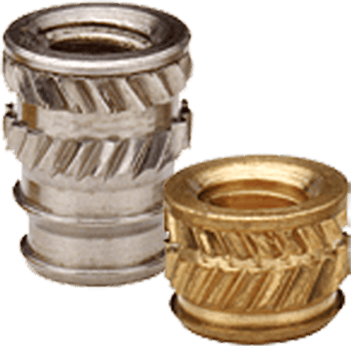
Inserts are a type of fastener designed to be installed in a component in order to accept a bolt or other fastener. The insert adds strength to the pairing to create a fastener with more longevity than would exist by simply adding threads to a base component.
Most often inserts will have threads on the inside to accept the threaded fastener, while also having threads on the outside to secure it solidly in the component material.
While there are many types of threaded inserts serving different purposes, they can be easily summarized as inserts with threads designed to accept a bolt or fastener. They provide advantages by their ability to hold fast in materials of different types and thicknesses.
As mentioned, there are many different installation methods when it comes to threaded inserts. The methods are designed for automation and economy. Let’s discuss the different installation types in more detail.
This method ensures the very best pull-out and torque performance. The process involves machine-directed insertions into the mold. Resin is then added to completely encase the insert, which creates a super strong bond. This approach requires close tolerances between the pins and inserts and achieves a more complicated core with closer tolerances. The process for molded-in installation will often take more time than heat- staking and ultrasonic methods.
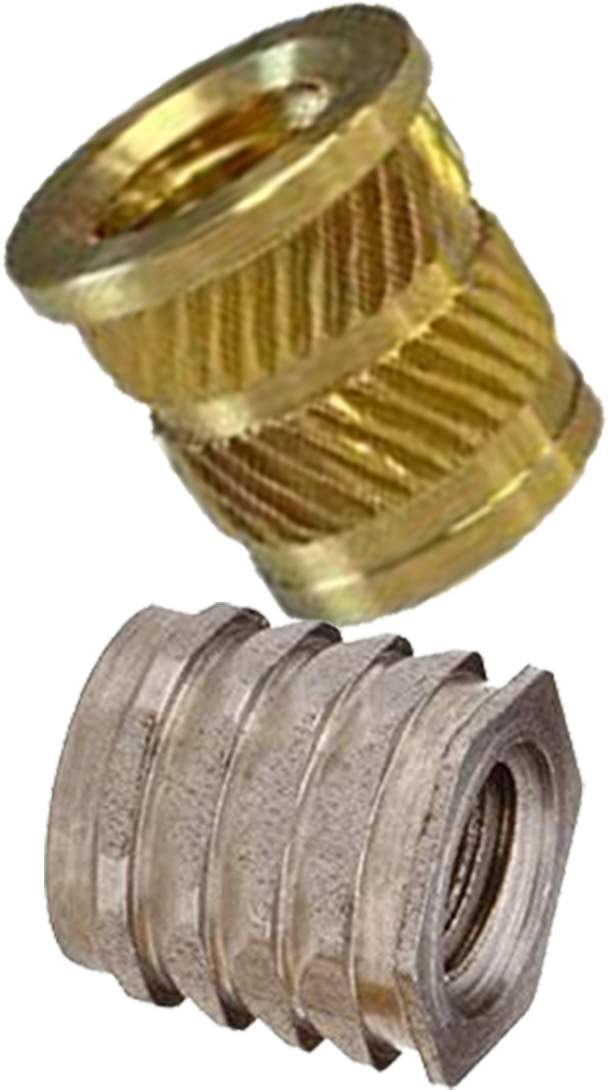
What is the best threaded insert for the type of application needed? By reviewing the different types of threaded inserts as well as the application and materials involved, we can help to answer that question.
Selecting the best threaded insert for plastic applications can be challenging, particularly when it comes to plastic assemblies that require multiple instances of assembly and breakdown. For plastic assemblies like this, metal threaded inserts are the more reliable choice for strength, resilience and torque capacity. There are two primary plastic materials to which threaded inserts are applied. Thermoplastics can be melted and recast over and over again. Polypropylene, polyethylene, polyvinyl chloride, polystyrene, polyethylene terephthalate, and polycarbonate are the most common types of thermoplastics. Thermoplastic insertion approaches include heat staking and ultrasonic methods. Thermoset plastics are molded via a permanent chemical reaction caused by the application of heat, pressure and time. Once set, thermoset plastic materials cannot be altered. Insertion applications include molding-in and cold insertion.
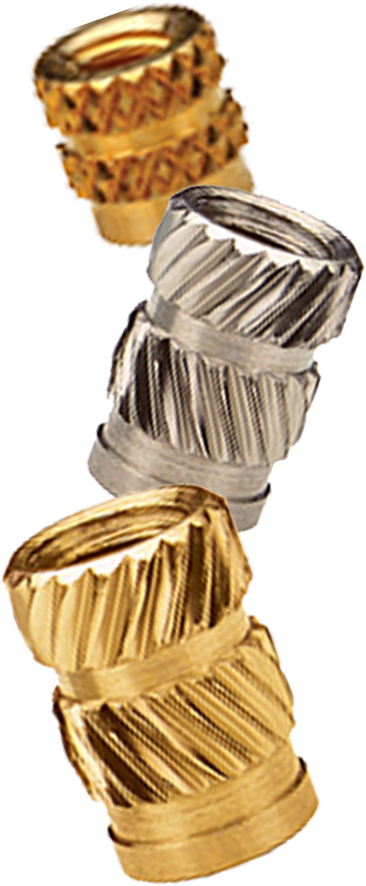
Compression limiters are non-threaded inserts used when a compressive load is applied to a plastic assembly. The compression limiter strengthens the plastic and withstands the compressive force that is applied when a mating screw is tightened. The integrity of the plastic is not compromised by the load that is applied. They can be designed in a wide range of sizes and profiles making them highly customizable. The compression limiters are available in brass, stainless steel, and lead-free aluminum, and are installed using ultrasonic, heat-staking, press-in or molded-in installation methods. They are available in four design types: flange-head, symmetrical, full diamond knurl and non-knurled symmetrical.
Threaded inserts for installation into metal are of a one-piece construction and are designed for easy insertion and removal. Most can be installed with standard drills and taps and work in many different types of materials. They are designed to resist vibration and have a high torque-out strength.
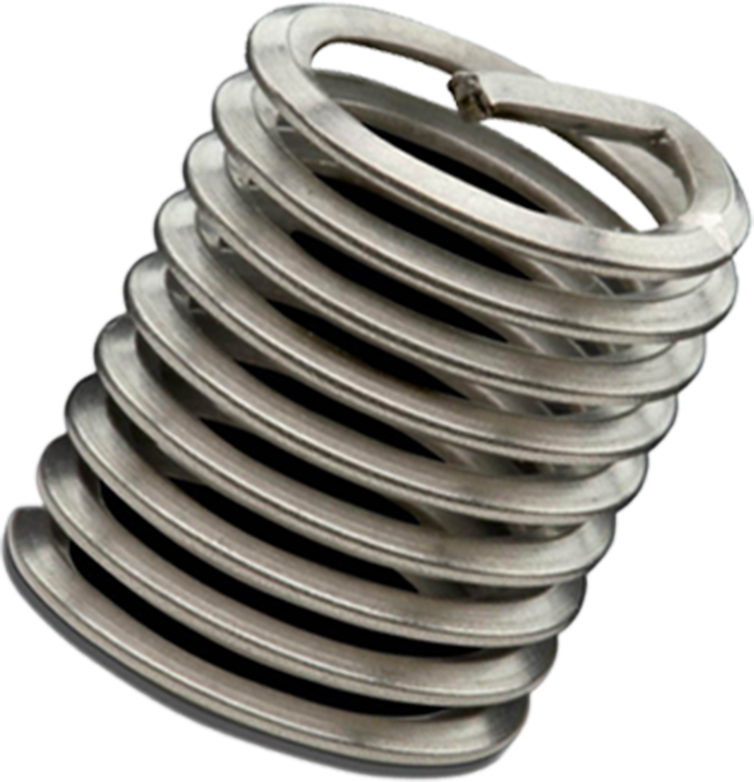
Self-tapping threaded inserts for wood, like the Heli-Coil self-tapping insert is a helically wound coil of carbon steel wire, precision-formed to a diamond- shaped cross section. The outside of the coil has knife-like threads that tap themselves in to give maximum penetration into the wood fibers yet leave thick sections of wood between the threads for maximum strength. The inserts can have different thread types, but are all designed for cutting into the wood material and locking in place utilizing the cross sections between threads.
Wire threaded inserts and installation tools consist of many configurations including plating, material, non-locking, or locking variants that make them fully adaptable and configurable for industries like automotive, industrial, aerospace, and defense. The trend in the industry is toward the lightweighting of materials while maintaining the structural integrity of bolted or fastened joints. Heli-Coil® by nature of its design is an ideal solution for these assemblies. The wire inserts consist of both tanged and tangless, screw thread, self-tapping, pipe thread, and coated varieties.
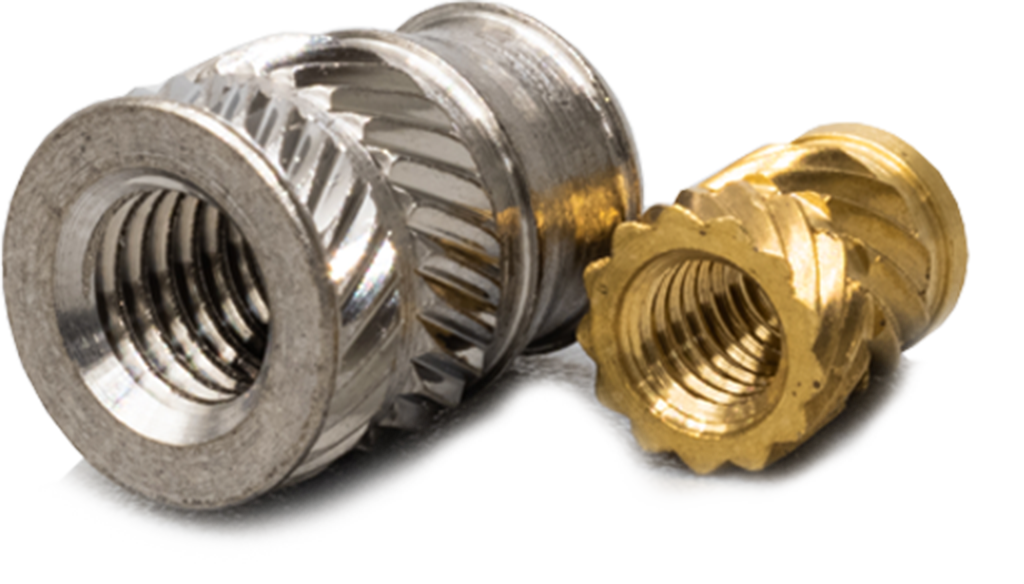
All of the threaded inserts in the HTF catalog come in a range of sizes to fit a range of solutions across industry and application. Inserts can be found in all standard sizes as well as special order varieties. Standard threaded inserts for plastics range from about 1/8″–9/16″ in diameter to 1/8″–5/8″ in length, with thread sizes ranging from #0-80 to 3/8-16. This size range accommodates a wide array of applications in industries including electronics, automotive, aerospace, defense, medical, industrial, and recreational equipment. For physically smaller applications, such as with handheld devices, microPEM® inserts are also available as small as 1 mm (0.039″) in diameter and 1.75 mm (0.069″) in length. These tiny inserts can accommodate an M1 fastener, the smallest ISO-designated M-profile thread. They can be installed with a heat- staking or ultrasonic process, and in straight or tapered holes.
Threaded inserts come in a variety of materials and sizes for installation into plastics, wood, and metal. This variety in configurations make them an ideal and long lasting choice for your application.
Before choosing materials or getting into the finer details of installation, it is important to have an overall understanding of the project or component being designed. If you know the purpose and function of your project, the next steps will come a lot easier.
Depending on the application, the type of material matters a great deal. Two insertion processes— ultrasonic and heat-staking— involve melting previously molded plastic and work with thermoplastics. For thermosets, the options are molding in the insert, or cold pressing the insert in later, where the elasticity of the resin material becomes crucial. The most common material for the threaded inserts is brass, but with ever-increasing sustainability requirements, lead-free alternatives such as stainless steel or aluminum are growing in popularity. Stainless steel offers better strength and corrosion resistance, and aluminum inserts are about 70% lighter than brass.
The installation and application of the threaded insert will be crucial to determining the right insert for the job. With threaded inserts being used in industries such as automotive, industrial, aerospace, and defense, there are a vast number of applications. When making the final decision on inserts it is best to factor in the installation method, the material best suited to your application, and the automation of the installation process.
Knurling is a metalworking process where a pattern is cut or rolled onto the outside of a workpiece. For threaded inserts, the knurling pattern directly impacts the strength requirements when it comes to resistance to pulling out or twisting out.
As previously mentioned, the knurling pattern plays a direct role in the strength of the application. Let’s review the different types of knurling patterns below:
Another important question to ask yourself is the strength requirements of the application. The two factors for strength requirements in an insert are resistance to pull out of the part and resistance to the insert twisting out when the mating fastener is torqued. The length of the insert has a direct impact on its strength. The longer the insert, the greater strength it has. Diameter also impacts the torque capacity of the insert. The greater the diameter of the insert, the more torque capacity.
With industry leading brands available and updated daily, HTF is your go to for Acme Industrial, SI Inserts, and Stanley Engineering Heli-Coil Inserts. Our experts are on hand to help you identify the right insert for your application.
HTF has the most extensive catalog of threaded inserts and they are delivered to you quickly with the best customer service. That’s why the top manufacturers in the industry partner with us. HTF is here to serve—reach out today.